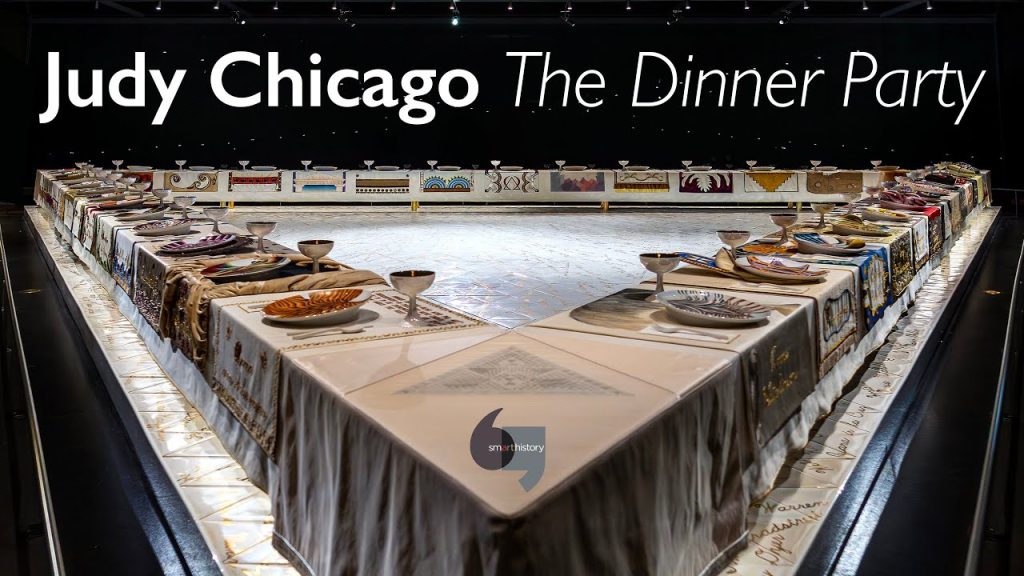Judy Chicago’s The Dinner Party stands as a groundbreaking work in the history of feminist art, reflecting a profound political and cultural statement about women’s contributions to history. The title itself evokes the image of a communal gathering, and metaphorically suggests a reimagining of history where women are no longer excluded from the narrative. Created in the late 1970s and early 1980s, this iconic installation reclaims women’s achievements that have often been marginalized or written out of mainstream historical accounts.
The Dinner Party is a symbolic triangular table adorned with 39 intricately designed place settings, each dedicated to a significant woman from history or mythology. Through the use of ceramic, embroidery, and other traditional craft techniques, Chicago challenges the gendered division between “high art” and “women’s work.” Political for its time—and still resonant today—the piece comments on the systemic exclusion of women from political power and cultural recognition, themes which remain deeply relevant in discussions about gender equality, representation, and social justice.
The work arrives amid the backdrop of the feminist movements of the 1970s, which pushed for legislative changes such as the Equal Rights Amendment and greater visibility for women in all spheres of life. The Dinner Party does more than simply celebrate women; it asserts that women’s history is integral and deserving of a place at the “table” of collective memory. This work intersected with debates on intersectionality, identity politics, and the inclusion of diverse voices within feminist discourse.
Politically engaged art like Chicago’s highlights how cultural productions can influence and reflect activism. The Dinner Party also sparked dialogue and controversy, including criticisms about which women were included or excluded and how femininity and symbolism were constructed. These discussions mirror ongoing political conversations about representation and inclusivity.
In today’s political climate, where issues of gender parity, female empowerment, and historical revisionism continue to dominate societal debates, The Dinner Party remains a powerful artistic testament to the importance of remembering and honoring women’s diverse legacies.
Where to Learn More
- Museum of Modern Art (MoMA) – Overview and critical analysis of Judy Chicago’s work and feminist art history
- The Art Story – Comprehensive biography and examination of Judy Chicago’s artistic and political impact
- The New York Times – Feminist Art Section – Articles and features covering feminist art and political intersections
- Encyclopædia Britannica – Detailed encyclopedia entry on The Dinner Party and its cultural significance
- History.com – Feminism – Contextual background on feminist movements relevant to the era of The Dinner Party’s creation




